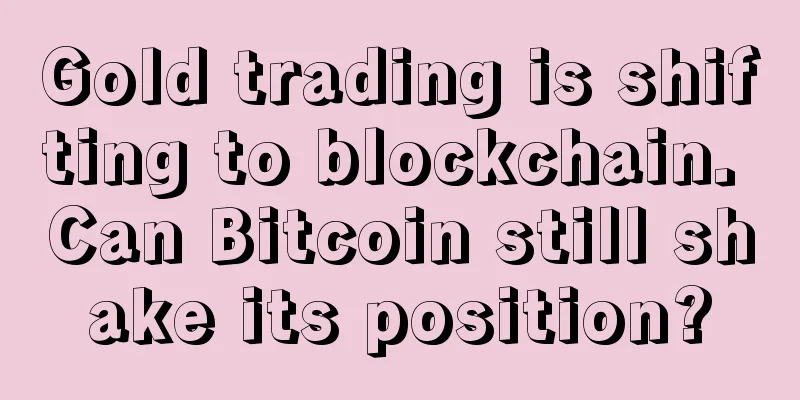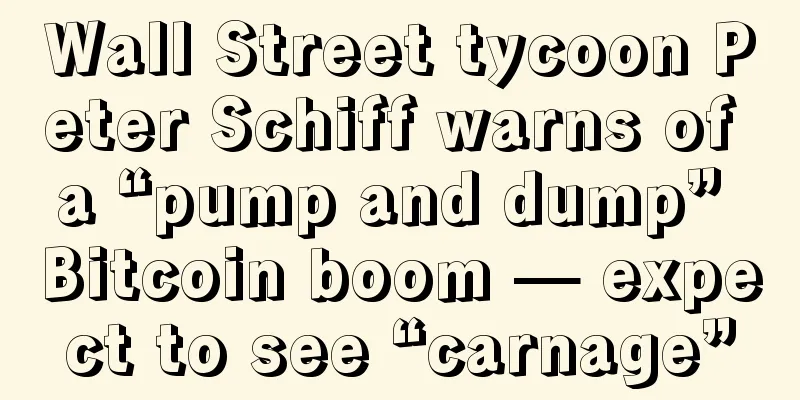Will the price increase after the halving? What is the impact of the halving?

|
In this guide, we will learn why the Bitcoin halving occurs and how this will affect the price of Bitcoin. In the Bitcoin blockchain system, every 210,000 blocks are generated, Bitcoin will undergo a process called "halving". This mechanism was written into the protocol by Satoshi Nakamoto, the founder of Bitcoin. When the halving occurs, the supply of new Bitcoins will be reduced by half, and the block rewards of miners will also be halved. What is Bitcoin Halving?Specifically, Bitcoin halving refers to the halving of Bitcoin block rewards. After each halving, the Bitcoin rewards miners receive for bookkeeping will be reduced by 50%. The total issuance of Bitcoin is capped at 21 million, which means that there are only 21 million Bitcoins at most. So why is there a limit on the issuance of Bitcoin? David Schwartz, CTO of Ripple, believes there are three reasons : Bitcoin — Understanding Mining and DeflationThe 21 million issuance cap ensures that Bitcoin is a deflationary asset. The key to understanding Bitcoin is to understand the concept of mining. Before we begin, we must make sure that you have heard of this term and are very familiar with its meaning in the Bitcoin world. “Mining” is a process in which nodes – also known as “miners” – use specialized mining equipment to solve cryptographic puzzles. When you make a transaction with Bitcoin, the transaction information must wait in a queue in a place called the "memory pool". Miners select transactions from the mempool and form a block. If the miner's solution meets the minimum requirements of the system, the block will be added to the Bitcoin blockchain and the transaction will be valid. It is important to remember that mining happens to be a resource-intensive job - it consumes a lot of electricity and money. The block reward is to financially incentivize miners to participate in the mining work. If there is no mechanism to stop it, then in theory miners will mine all the bitcoins in the world, completely distorting the overall supply and demand balance. In a perfectly competitive market, prices will spontaneously adjust to a state of equilibrium between supply and demand. If miners were allowed to mine as much Bitcoin as they wanted, the circulating supply of Bitcoin would grow exponentially, and in the process, its price would fall sharply. This is why the Bitcoin halving mechanism is hard-coded into the protocol to control circulating supply. Do transaction fees compensate for block rewards?The figure below is an overview of the Bitcoin halving timeline. It is estimated that the last Bitcoin will be mined after the 64th halving, which will happen around 2140. By then, the block reward will be reduced to 0, and miners will have to rely entirely on transaction fees as mining income. Although transaction fees are fairly minuscule compared to the block reward, at some point between December 2017 and January 2018, the average transaction fee skyrocketed to $54. The reason for this is pretty simple. Consider the following assumptions. When demand increases, the amount of transactions waiting to be recorded in the memory pool will also increase. Then, the block size of Bitcoin is limited to 1Mb, which means that the amount of transactions that can be recorded in a block is limited. In order to make their transactions recorded and effective in a timely manner, traders can increase the handling fees they provide, thereby incentivizing miners to record their transactions first. So we expect demand for Bitcoin to rise around 2140 as well, based on the following reasons: What happens when Bitcoin halves?1. Mining stability When judging the impact of halving, the first thing to pay attention to is the stability of mining. As we mentioned before, miners play a vital role in the economic system of Bitcoin. In addition to mining new blocks and recording transaction information, miners are also responsible for the maintenance of the entire blockchain network. Here we have to talk about the concept of "hash rate". Hash rate is a term used to describe the computing power of a network. The higher the hash rate, the faster and more secure the network is. If a large number of miners suddenly decide to leave the network, the following things will happen: Considering that miners rely on block rewards as their main source of income, how will they treat the halving event - will they decisively leave and stop losses in time or hold their ground to maintain the network? Let's answer this question with factual data. The 2012 halving: Image source: BitInfoCharts What happened after the halving? First, let's look at the change in hash rate. In two weeks, the hash rate of the Bitcoin network dropped from 27.61 THash/s to 19.98 THash/s. However, the hash rate has been rising steadily since then, reaching 60 THash/s six months later. Therefore, despite the initial small drop, the hash rate of the entire network still rose in the end. Image source: BitInfoCharts Let’s take a look at the mining revenue. After the halving, the mining revenue plummeted, but recovered to the pre-halving level four months later. The 2016 halving: Image source: BitInfoCharts First, let’s focus on the hash rate. Similar to 2012, after the halving in 2016, the hash rate of the Bitcoin network dropped from 1.56 EHash/s to 1.40 EHash/s. However, within seven months, the hash rate rose to 3.85 EHash/s. Image source: BitInfoCharts However, the trend of mining revenue has not been as optimistic as in 2012. After the halving in 2016, Bitcoin mining revenue has decreased significantly - it has remained at a low level for a long time after a sharp drop. The 2020 halving: Image source: BitInfoCharts First, let’s focus on the hash rate. Before the halving in 2020, the hash rate of the Bitcoin network first surged to 137 EHash/s, then quickly fell back, and fell to 87 EHash/s after the halving. After July, the hash rate stabilized at more than 120 EHash/s. Image source: BitInfoCharts Mining revenue is similar to that in 2016. After the halving, Bitcoin mining revenue has almost decreased by 50%. This is mainly because the output of Bitcoin mining has been reduced by half, but the price of the currency has not increased significantly. 2. Bitcoin price: Image source : Fitzner Blockchain in Medium Finally, the big question that everyone is concerned about is: after the halving, did the price of Bitcoin really increase? After the halving in 2012, the price of Bitcoin initially only rose from $11 to $12, but a year later it quickly rose to $1,038, an increase of 9,336.36%. Then, after the 420,000th new block was generated, in July 2016, Bitcoin experienced its second price leap. In the month before the halving, the price of Bitcoin rose from $576 to $650, as investors were buying Bitcoin in large quantities, expecting the price to soar after the halving. Sure enough, one year after the halving, on July 9, 2017, the price of Bitcoin rose to $2,526, an increase of 288.60%. At the time of the third Bitcoin halving on May 12, 2020, the price of Bitcoin was $8,800. As of today, the price of Bitcoin is $10,880, up 24%, which is insignificant compared to the previous two increases. The previous two huge increases in Bitcoin occurred one year after the halving, and it has only been four months since the halving. Here’s a quick chart of the impact of the three halving events:
We found that the price of Bitcoin did experience an increase after the halving in 2016, but the increase was far less than that in 2012. We believe that this is due to the increase in the overall volume of Bitcoin, which has led to a decrease in the increase. We speculate that the increase in the price of Bitcoin after the halving in 2020 will be smaller than the increase in the price of Bitcoin in 2016. Of course, there are some dissenting voices who believe that the halving will not affect the price of Bitcoin. Let’s take a look at their views. The current market conditions for Bitcoin are very different from those in 2012 and 2016. In order to understand that future halvings may not have such a significant impact on Bitcoin prices, we must consider several specific issues: Bitcoin halving is the core of the protocol. Think about it, halving guarantees the deflationary nature of Bitcoin, which distinguishes it from centrally controlled, inflationary fiat currencies. Even after all Bitcoins are mined, the inherent economic logic can still maintain the stable operation of the Bitcoin network. As for whether Bitcoin will continue to appreciate as before with the halving, or whether new factors may emerge to suppress its price increase, it is too early to draw a conclusion now. Reprinted from: Tsinghua Digital Financial Assets Research Center |
<<: An overview of the decentralized storage track
Recommend
Is tear mole good? What is tear mole?
There are many types of moles, and tear mole is o...
Women without cleavage have no career development
The career line may be a little ambiguous to peop...
Which faces will be dragged down by their children?
Which faces will be dragged down by their childre...
What does a man with a mole on the sole of his foot mean?
Many friends find moles on the soles of their fee...
The most likely couple to quarrel
The most likely couple to quarrel Although it is ...
Palmistry tells you how you can make money in this life
Palmistry tells you how you can make money in thi...
What does a sunken palace of marriage mean? It may lead to divorce.
Facial features actually represent different fort...
What will happen to you when you face a windfall?
What will happen to you when you face a windfall?...
What are the characteristics of a woman with an ugly face?
People’s faces have different characteristics, bu...
A face that doesn't mind if a friend treats you to a meal, even if it's fast food
Because people usually go for a big meal when the...
What are the signs of good luck?
As we all know, the good or bad fortune will be r...
The person who is most likely to cause trouble
The person who is most likely to cause trouble Ev...
How to solve the eight-character wrinkles at the corners of the mouth? What is the saying of physiognomy?
The wrinkles at the corners of the mouth are a ve...
Money never sleeps! Let us show you the capital distribution in the blockchain field!
We all admit that the dog has the best sense of s...
Palmistry pictures of two marriages
Palmistry pictures of two marriages Love lines ar...









